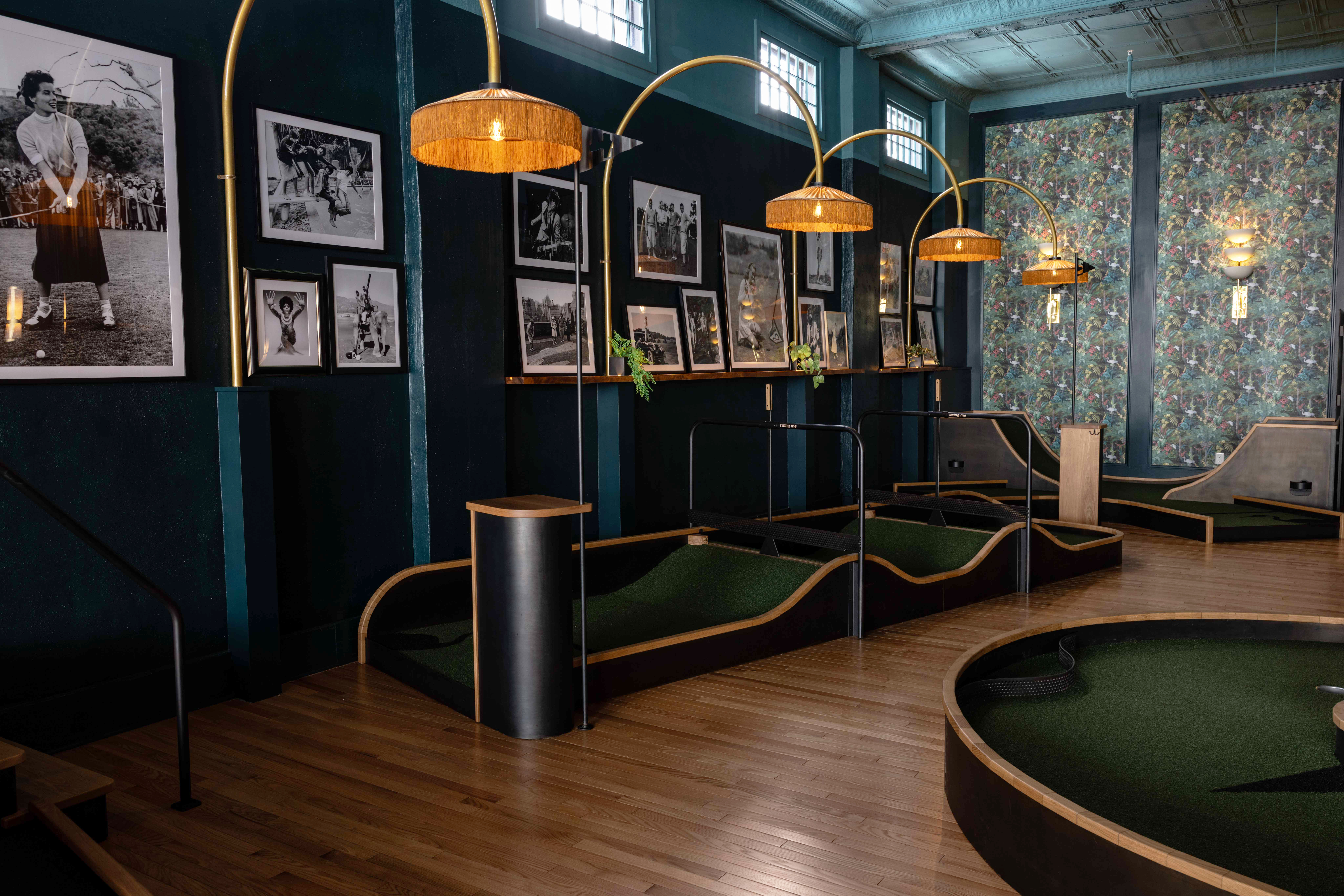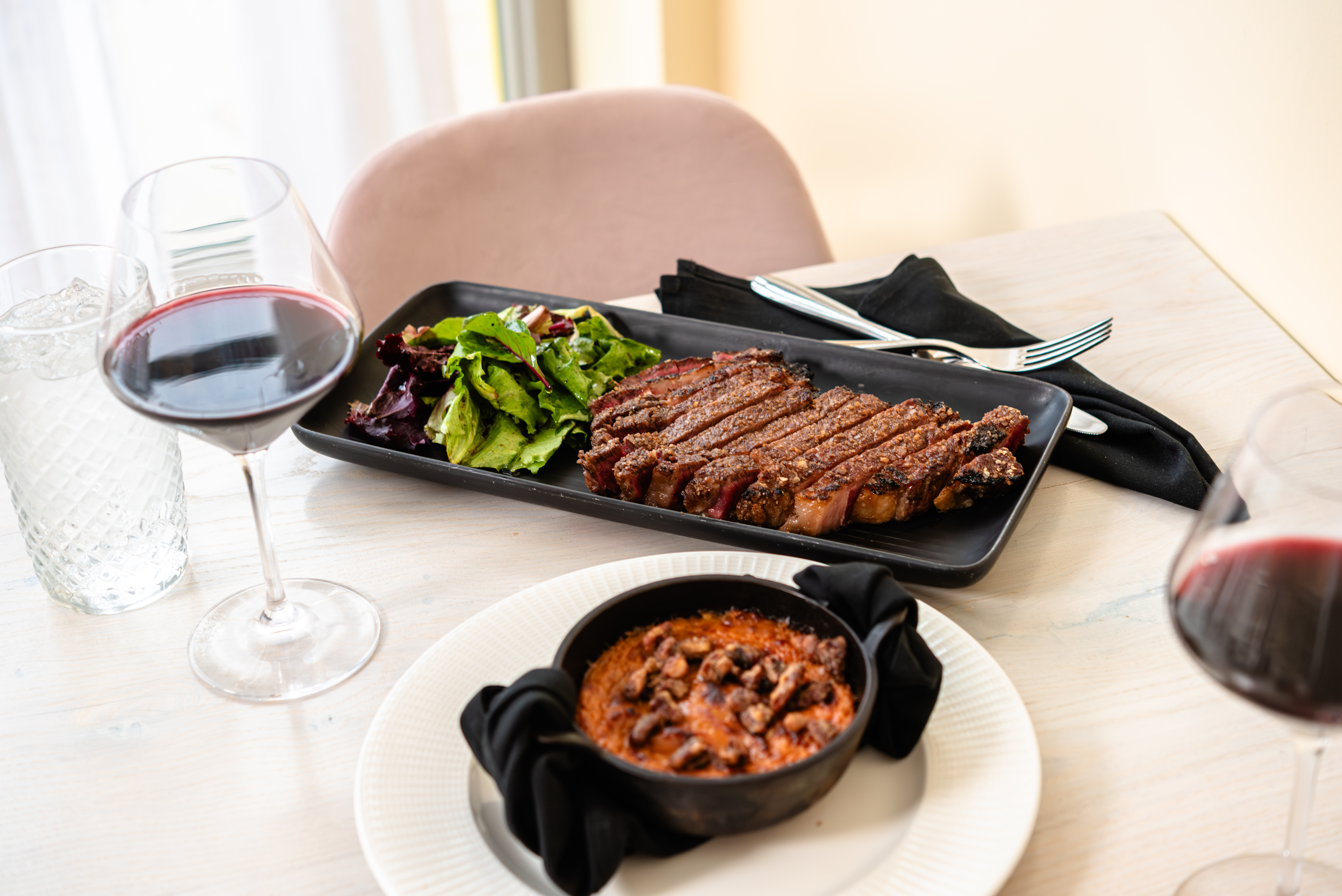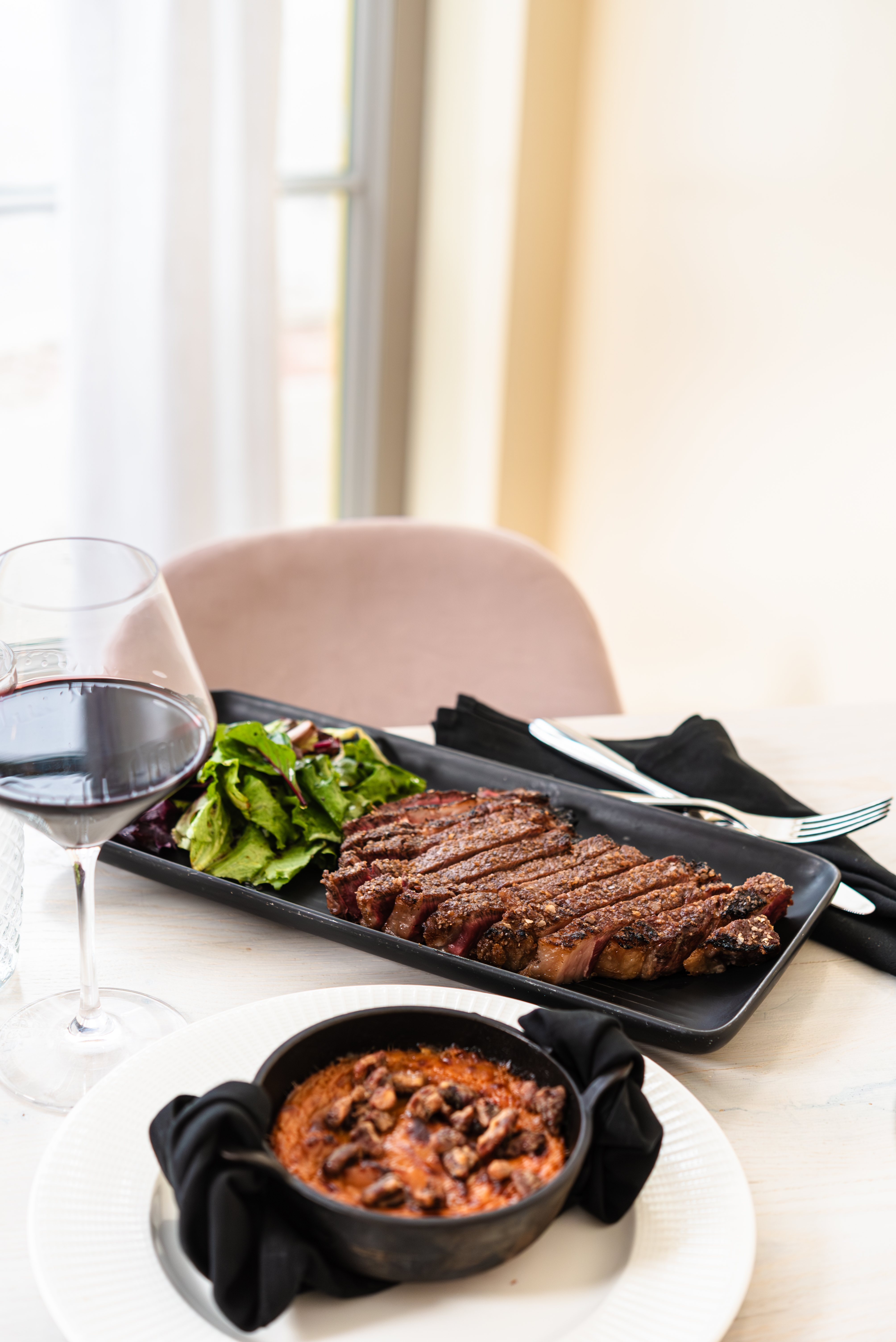Dinner Party
by Laura Adiletta | Dec. 18, 2014 | 5:00 AM
Being in the kitchen around food and cooking are some of Karen Gorman's fondest childhood memories. Growing up in Akron, she would help her grandmother make traditional Hungarian dishes such as goulash, stuffed cabbage and cakes. On alternate Sundays, Gorman visited her mother's side of the family, where her Sicilian grandfather — a former Navy cook — would prepare dinner.
"That whole thing was really all about having meals with family and gathering around the table," says Gorman, who is now the chef and owner of Crumb & Spigot in Bainbridge. "It sounds cliche, but that's where I got my love of cooking and eating."
So it was no surprise that Gorman pursued a career in the kitchen. After college she worked at That Place on Bellflower (currently Zack Bruell's L'Albatros Brasserie and Bar) and the now-defunct Cafe Brio on Mayfield Road, which was owned by Lopez on Lee owner Craig Sumers and Red, the Steakhouse partner Brad Friedlander.
After a two-year stint in Chicago, she returned to Cleveland. Sumers and Friedlander asked her and her best friend, Heidi Robb, to run the restaurateurs' catering business, which the duo later morphed into their own luxury catering operation in 1998.
"It was super fussy," she says of the menus at their company, which the pair operated for 15 years. Initially, they orchestrated meticulous, multicourse parties with expensive and highly composed dishes: pickled oysters with cucumber capellini and beluga caviar, butter-poached lobster with foie gras. But her clients' tastes eventually changed.
"We found ourselves making simpler and simpler menus, because that's what people wanted," she says. "And it was kind of what we wanted to cook."
When they eventually decided to move on, Gorman helped open Lemon Falls, a gourmet cafe in Chagrin Falls. She then set out to find the perfect spot of her own.
"I thought, If I open a place, I just want it to be super-simple food where people can come more than once a week and not get tired of the flavor," she says. "It sounds so trite, but [I wanted it to] almost be like they were in my house."
For culinary inspiration Gorman went way back to the basics, cooking in her own backyard for a year leading up to Crumb & Spigot's June opening.
"I just kind of started cooking out there over my fire pit on a stick," she recalls, "figuring out what I liked." Her outdoor experimentation led to a key development inside the restaurant: a wood-burning oven, which is used to cook everything from appetizers and pizzas to roasted meats and seafood.
Gorman's cooking style is deceptively simple, her restaurant intimate and cozy. And thanks to nearly two decades in the catering business, she always appears calm at the helm of the open kitchen — even when the place is packed and temperatures soar in front of the hearth oven.
While the inventive cocktail menu developed by chef and partner Ryan King is extensive, the food options at Crumb & Spigot are fairly modest.
Fewer than 10 appetizers, a handful each of salads, sandwiches and entrees, a weekly special or two, plus a dozen different pizzas — not including the make-it-your-own ingredients — offer enough choices without being overwhelming. In turn, this allows the restaurant's small kitchen and crew to focus on getting these few dishes right.
The dry-aged meatballs ($10), for instance, were fluffy without crumbling and tasted subtly smoky, whether from the meat or from the wood-burning fire. They are big enough to edge off hunger but not quite filling — perfect for an appetizer.
And a crunchy greens salad ($8) with smoked blue cheese was priced low enough to make it a great choice for a side dish or light appetizer.
A surprising standout is the beer can chicken ($19), something seen more often at cookouts than on tavern menus. It works here for that very reason, says Gorman.
"It has to be simple. It has to come in fresh, not be fussed with too much and go straight out to the table," she says. "So there's not a lot of behind-the-scenes preparation."
Half a roasted chicken, including breast, thigh and leg, is topped with a bright, acidic chimichurri made with garlic, herbs and carrot tops and accompanied by lightly roasted carrots and fingerling potatoes.
It's straightforward but perfectly done. The chicken is moist and flavorful, and each ingredient is allowed to stand more or less unadorned.
Of course, the 12-inch pizzas are the stars of the wood-burning oven. Crumb & Spigot's crispy-on-the-bottom, blistered-on-the-top dough is the perfect vehicle for both classic and creative toppings. A sausage pizza ($14) is savory and smoky with finely ground pork sausage, mozzarella and smoked provolone, while a take on mushroom pizza ($14) goes beyond standard fare with aged cheddar and taleggio cheeses.
The dessert menu here is likewise tightly curated. Order the butterscotch pudding ($7), so custardy it was almost like a loose creme brulee, served with two stellar shortbread cookies.
The simpler-is-better philosophy is manifested in Crumb & Spigot's decor as well. Plaid upholstery and dark walls reflect Gorman's pared-down style. Even the name evokes humble coziness, which she says was inspired by the neighborhood taverns of England that she loves.
"I really wanted to open something, frankly, that was like 20 seats with a daily menu change or a weekly menu change with a really fabulous bar," says Gorman. "It kind of mushroomed into 50 seats."
It might be strange to hear the cozy restaurant described as too large, but for Gorman, it makes sense. "I like to see the customers' reactions," she says. "That's why I keep it small."
When You Go
TRY THIS: The house-made soft pretzel ($7), which is presented on a rustic wooden board with ramekins of mustard and Bavarian-style cheese, is the perfect appetizer for cozying up to the bar. GOOD TO KNOW: The tavern's limited table seating means visitors are first come, first served. To guarantee a spot, it's best to call ahead or avoid their peak hours, which occur on Tuesday, Friday and Saturday from 6 to 8 p.m. Even if you miss out on a table, there's always the bar.
Feed the Flames
Crumb & Spigot chef and owner Karen Gorman shares her years of experience with gourmet cooking over an open flame.
When was the last time you cooked a meal over an open fire? And we're not talking hot dogs on a stick or toasted marshmallows here. Diners are more connected than ever with food thanks to new restaurants, farmers markets and celebrity chefs. Yet traditions that sustained our ancestors for millennia have fallen by the wayside in favor of modern conveniences such as microwaves and convection ovens. It's this spirit that Karen Gorman, chef and owner of Crumb & Spigot, sought to recapture with her wood-fired oven concept. She spent a year cooking over her backyard fire pit, trying out recipes that go beyond the typical churn-and-burn grill food and taking inspiration from Francis Mallman's Seven Fires cookbook. Here are some of her tried techniques for going gourmet outdoors.
SAFETY FIRST: "Don't build under tree limbs or awnings," says Gorman. Choose a spot at least 20 feet from structures, take extra caution around kids and "don't spray anything flammable — even olive oil — into fire." That means no spray cans. Also keep a pile of dirt and a source of water ready to extinguish flames.
WHICH WOOD: "The same [fire-building] principles apply with charcoal," Gorman advises, but if you want to use wood, start with the right kind. Choose hardwood that has seasoned, or dried, at least six months. Cherry, apple, hickory or oak are all good choices; avoid cedar or pine. It's "too resinous" and "gives off lots of bitter smoke."
LAYER FOR HEAT: Building a good cooking fire isn't as simple as stack, douse and light. "The key is to build a big enough fire to use for the entire cooking process," Gorman says. Start with crumpled paper, and then build a teepee from small twigs or kindling. Add larger pieces as you build, maintaining the conical structure until you get to large logs. "In the restaurant, we build more of a crosshatch kindling base," she says, but the idea is the same: Keep the air flowing under, around and on top of logs for a hot fire.
HEAT AND EAT: The best way to cook over fire is through indirect heat, much like you would use on a grill. As Gorman says, "[You] can't really start cooking over a wood fire until it has burned to coals." Once you've got that glowy goodness, use a grate if you have one, or "simply use skewers and get everyone involved." She likes to cook fish over dried fennel stalks, which both help shield the delicate flesh from excess heat and provide aromatics.
AFTERBURN: "Use late, post-entrée fire to warm dessert or make s'mores," says Gorman. It's time to start thinking about your next meal once the coals have died down to mostly ash and embers. "Ember roasting [is] not about •now' but planning for later use," she explains. Push onions, skin and all, into the coals and roast until tender. Garlic and eggplant should be tossed in oil and wrapped in foil before roasting, while thick-skinned gourds and peppers provide their own protections. Just peel away the char and eat.
Trending
-
1
-
2
-
3
-
4
-
5










